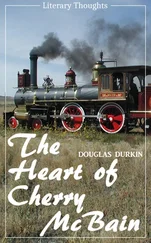Douglas Child - The Wheel of Darkness
Здесь есть возможность читать онлайн «Douglas Child - The Wheel of Darkness» весь текст электронной книги совершенно бесплатно (целиком полную версию без сокращений). В некоторых случаях можно слушать аудио, скачать через торрент в формате fb2 и присутствует краткое содержание. Жанр: Триллер, на английском языке. Описание произведения, (предисловие) а так же отзывы посетителей доступны на портале библиотеки ЛибКат.
- Название:The Wheel of Darkness
- Автор:
- Жанр:
- Год:неизвестен
- ISBN:нет данных
- Рейтинг книги:3 / 5. Голосов: 1
-
Избранное:Добавить в избранное
- Отзывы:
-
Ваша оценка:
- 60
- 1
- 2
- 3
- 4
- 5
The Wheel of Darkness: краткое содержание, описание и аннотация
Предлагаем к чтению аннотацию, описание, краткое содержание или предисловие (зависит от того, что написал сам автор книги «The Wheel of Darkness»). Если вы не нашли необходимую информацию о книге — напишите в комментариях, мы постараемся отыскать её.
The Wheel of Darkness — читать онлайн бесплатно полную книгу (весь текст) целиком
Ниже представлен текст книги, разбитый по страницам. Система сохранения места последней прочитанной страницы, позволяет с удобством читать онлайн бесплатно книгу «The Wheel of Darkness», без необходимости каждый раз заново искать на чём Вы остановились. Поставьте закладку, и сможете в любой момент перейти на страницу, на которой закончили чтение.
Интервал:
Закладка:
“I’m not sure. The geometry of it somehow lights up the neural networks of the brain. It creates a resonance, if you will. Perhaps on a deep level our brains themselves reflect the fundamental geometry of the universe. The Agozyen is a rare intersection of neurology, mathematics, and mysticism.”
“Extraordinary.”
“There are many things the dull Western mind has yet to appreciate about Eastern philosophy and mysticism. But we’re starting to catch up. Scientists at Harvard, for example, have just begun to study the effect of Tibetan meditative practice on the mind—and to their amazement they discovered that it actually causes permanent physical changes in the brain and body.”
They reached a crossing of the Tsangpo. The river was shallow and broad at the ford, running merrily over a shallow bed of cobbles, the rushing sound of water filling the air. Gingerly their horses stepped into the torrent and picked their way across. They came out on the far side and continued on.
“And the smoke ghost? Is there some kind of scientific explanation for that?”
“There’s a scientific explanation for everything, Constance. There are no such things as miracles or magic—only science we haven’t yet discovered. The smoke ghost was, of course, a tulpa, or ‘thoughtform’—an entity created through an act of intense, focused imagination.”
“The monks taught me some of the tulpa-creation techniques, but they warned me of the danger.”
“It’s extremely dangerous. The phenomenon was first described to the West by the French explorer Alexandra David-Néel. She learned the secrets of creating a tulpa not far from here, near Lake Manosawar. As a lark she tried it out and, it seems, began visualizing a plump, jolly little monk named Friar Tuck. At first, the monk existed only in her mind, but in time he began to take on a life of his own, and she glimpsed him at odd moments, flitting about her camp and frightening her fellow travelers. Things went downhill; she lost control of the monk and it began to morph into something bigger, leaner, and far more sinister. It took on a life of its own—just like our smoke ghost. She tried to destroy it by reabsorbing it into her mind, but the tulpa strenuously resisted and the end result was a psychic battle that almost killed David-Néel. The tulpa on board the Britannia was the creation of our friend Blackburn—and it did kill him.”
“So he was an adept.”
“Yes. He traveled and studied in Sikkim as a young man. He realized immediately what the Agozyen was, and how it could be used—much to Jordan Ambrose’s misfortune. It was no concidence it ended up with Blackburn; there was nothing at all random in its movements through the world. You might say the Agozyen sought Blackburn out, using Ambrose as a medium. Blackburn, with his billions and his dot-com savvy, was in a perfect position to spread the image of the Agozyen across the globe.”
They traveled a moment in silence. “You know,” Constance said, “you never did explain to me how you sent the tulpa after Captain Mason.”
Pendergast did not answer immediately. Clearly, the memory was still extremely painful. At last, he spoke. “When I freed myself from its grasp, I allowed a single image to form in my mind: the Agozyen. In essence, I implanted that image in the tulpa. I gave it a new desire.”
“You changed its prey.”
“Exactly. When the tulpa left us, it sought out the other living beings who had gazed on the Agozyen—and, in the case of Mason, somebody who was, indirectly at least, bent on its destruction. And the tulpa annihilated them both.”
“And then?”
“I have no idea where it went. Things having come full circle, as it were, perhaps it returned to whatever plane it was summoned from. That, or it simply vanished with the death of its creator. It would be interesting to hear the views of the monks on this question.”
“So it was an agent for good in the end.” “One could say that—although I doubt goodness is a concept that it would either understand or care about.”
“Nevertheless, you used it to save the
Britannia
.”
“True. And as a result I feel a little less mortified at having been wrong.”
“Wrong? How?”
“Assuming all the killings were the work of one person—a passenger. In point of fact, Blackburn only killed one person—and he did that on dry land.”
“In the most bizarre of ways. It seems that the Agozyen lifts the lid, as it were, unleashing the most buried of a person’s violent and atavistic impulses.”
“Yes. And that’s what confused me—the similar M.O. I assumed the murders had all been committed by the same person, when I should have understood that there were two different killers under the influence of the same malevolent effect —the effect of the Agozyen.”
They had reached the base of the trail going up the cliff. Pendergast dismounted and, in a gesture of prayer, placed his hand upon the huge mani stone at the base. Constance followed, and they proceeded up the trail, leading their horses by the reins. At last, they reached the top, passed through the ruined village, and finally came around the shoulder of the mountain, spying the pinnacled roofs, towers, and sloping ramparts of the Gsalrig Chongg monastery. They passed the scree slope covered with weathered bones—the vultures had departed—and arrived at the monastery.
The gate in the outer stone wall opened almost before they had reached it. Two monks met them; one led off the two riding horses while Pendergast unpacked the cargo from the pony. He tucked the box under his arm, and he and Constance followed the monk through the ironbound doors into the monastery’s dark interior, fragrant with sandalwood and smoke. Another monk appeared with a brass candleholder and led them deeper into the monastery.
They came to the room with the golden statue of Padmasambhava, the Tantric Buddha. The monks had already gathered on the stone benches, presided over by the ancient abbot.
Pendergast placed the box on the floor and seated himself on one of the benches. Constance sat next to him.
Tsering rose. “Friend Pendergast and Friend Greene,” he said, “we welcome you back to monastery of Gsalrig Chongg. Please take tea with us.”
Cups of sweet buttered tea were brought out and enjoyed in silence. Then Tsering spoke again.
“What have you brought us?”
“The Agozyen.”
“This is not its box.”
“The original box did not survive.” “And the Agozyen?”
“Inside—in original condition.”
A silence. The ancient abbot spoke, and then Tsering translated. “The abbot would like to know: did anyone look upon it?”
“Yes.”
“How many?”
“Five.”
“And where are they now?”
“Four are dead.”
“And the fifth?”
“I was the fifth.”
When this was translated the abbot rose abruptly and stared. He then walked over to Pendergast, grasped him with a bony hand, and pulled him to his feet with astonishing force. He stared into his eyes. Minutes passed in the silent room—and then the abbot finally spoke.
“The abbot say this extraordinary,” Tsering translated. “You burn off the demon. But you remain damaged, because once you experience ecstasy of the pure freedom of evil, you can never forget that joy. We will help you, but we can never make you whole.”
“I’m already aware of that.”
The abbot bowed. He bent down and picked up the box, handing it to another monk, who carried it off.
“You have our eternal thanks, Friend Pendergast,” said Tsering. “You have accomplished great feat—at great cost.”
Pendergast remained standing. “I’m afraid it isn’t quite over yet,” he replied. “You have a thief in your midst. It seems that one of your monks thought the world was ripe for cleansing and arranged for the theft of the Agozyen. We still must find that monk and stop him from doing it again—or the Agozyen will never be safe.”
Читать дальшеИнтервал:
Закладка:
Похожие книги на «The Wheel of Darkness»
Представляем Вашему вниманию похожие книги на «The Wheel of Darkness» списком для выбора. Мы отобрали схожую по названию и смыслу литературу в надежде предоставить читателям больше вариантов отыскать новые, интересные, ещё непрочитанные произведения.
Обсуждение, отзывы о книге «The Wheel of Darkness» и просто собственные мнения читателей. Оставьте ваши комментарии, напишите, что Вы думаете о произведении, его смысле или главных героях. Укажите что конкретно понравилось, а что нет, и почему Вы так считаете.












